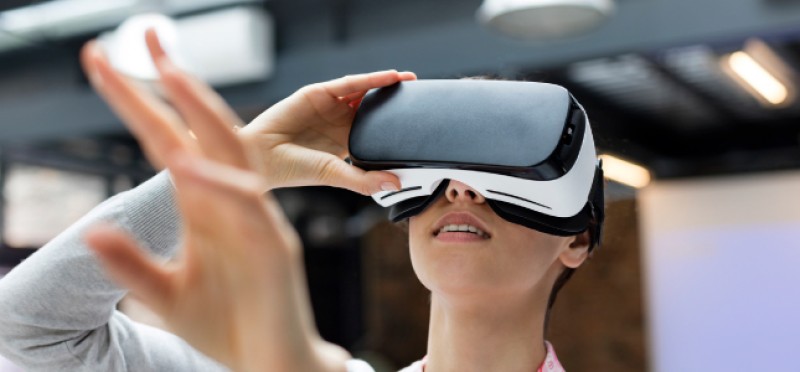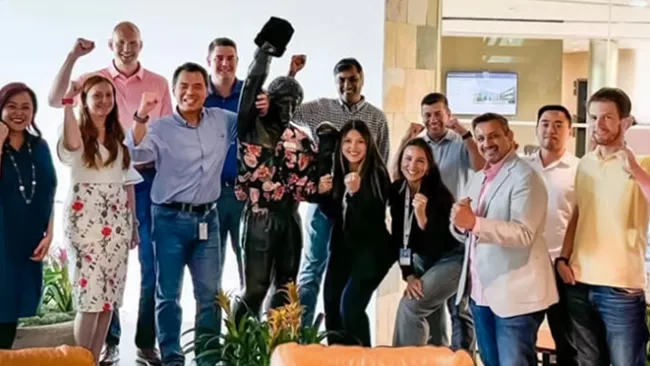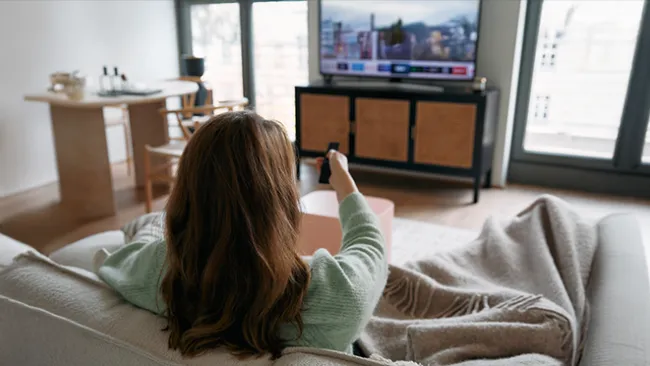It’s time to let Walter go. You look at his list of transgressions next to your coffee, your coworkers chatter nearby, and keyboard clicks trickle in the background. You two talk—it’s a tough discussion but in the end, Walter understands and shakes your hand. The screen goes dark, you take off your virtual reality headset, and you let your coworker take a spin. This is the new world of training.
Virtual reality (VR) tools that immerse users in a virtual world (headset and joysticks) and augmented reality (AR) tools that overlay digital content on top of the physical world (think Pokémon GO) are quickly gaining traction as ways to enhance the traditional training environment in many industries.
The beauty of XR technology, the umbrella term for both AR and VR tools, is that it gives employees the opportunity to perfect training scenarios, such as difficult customer interactions or complicated product instructions, in a safe and responsive environment on their own time, while also enjoying an increasingly relevant and fun technology that relates to video games and pop culture.
Already many Fortune 500 companies are blending XR technology into their training to appeal to a new generation of workers and provide real-time experiences. Just a few months ago, UPS deployed a VR program that replicated a roadway to create opportunities for drivers to learn road culture and safety education that can be utilized to avoid accidents in the real world. And Walmart is using an Oculus Go headset (a device many employees use when we mention VR) to test employee knowledge of the store, deal with customers, and test their stores whereabouts.
XR technology is not a one-size-fits-all approach to training, however, and it cannot replace everything learned in a traditional training environment. Rather, think of it as an enhancement to flesh out and immerse oneself into key scenarios that will be present in the workplace. With that in mind, there are four types of training in particular that this technology can be used for:
- Conversational training: This is the “Walter” example from the beginning of our story. VR technology, through the use of headsets and joysticks, can create incredibly interactive environments where the employee can interact with digital characters to converse about situations that would be otherwise difficult or awkward with to have with an employee or fellow trainee. Furthermore, it gamifies the experience with video game elements by giving feedback and scores that can be compared with others.
- Process-based training: VR is becoming more than just “seeing” another world. The joysticks that come with most headsets (usually a controller held in each hand) lets employees interact and move objects and products that encompass their daily work life. Electricians can learn a protocol for changing faulty wiring several times over without putting themselves in danger, for example, letting them identify the intricacy of their task stress-free. Many programs also offer “randomizer” options, which can create unique scenarios many times over, such as difference house floorplans or customer moods.
- Object-based training: Another hands-on approach similar to process-based, object-based training lets users virtually deconstruct or pick apart their organization’s products to get an in depth feel for what they are working on. For automotive workers, this is a fantastic method to peel away at the layers of a car to see the extent of damage and how each piece affects one another, for example.
- Collaborative training: A growing field in AR technology is the ability to connect two smart devices together to let workers and “customers” see the same scenario together on one screen. Shared screens can allow multiple trainees to interact on a virtual task together, showing real-time updates, directions, and advice to users while they watch their colleagues’ “digital” hands get to work. This type of training is especially useful in group training, such as classes of customer service employees.
When XR technology first came out it was a novelty, a way for people to sit back and observe a new environment. Now it is growing into something so much more—a collaborative and interactive tool that is becoming a key tool in any modern workplace’s arsenal. Organizations that want to meet the expectations of the upcoming millennial and Gen Z workforce need to understand the tools they use to navigate the world and how that can best used in a professional work environment.
















